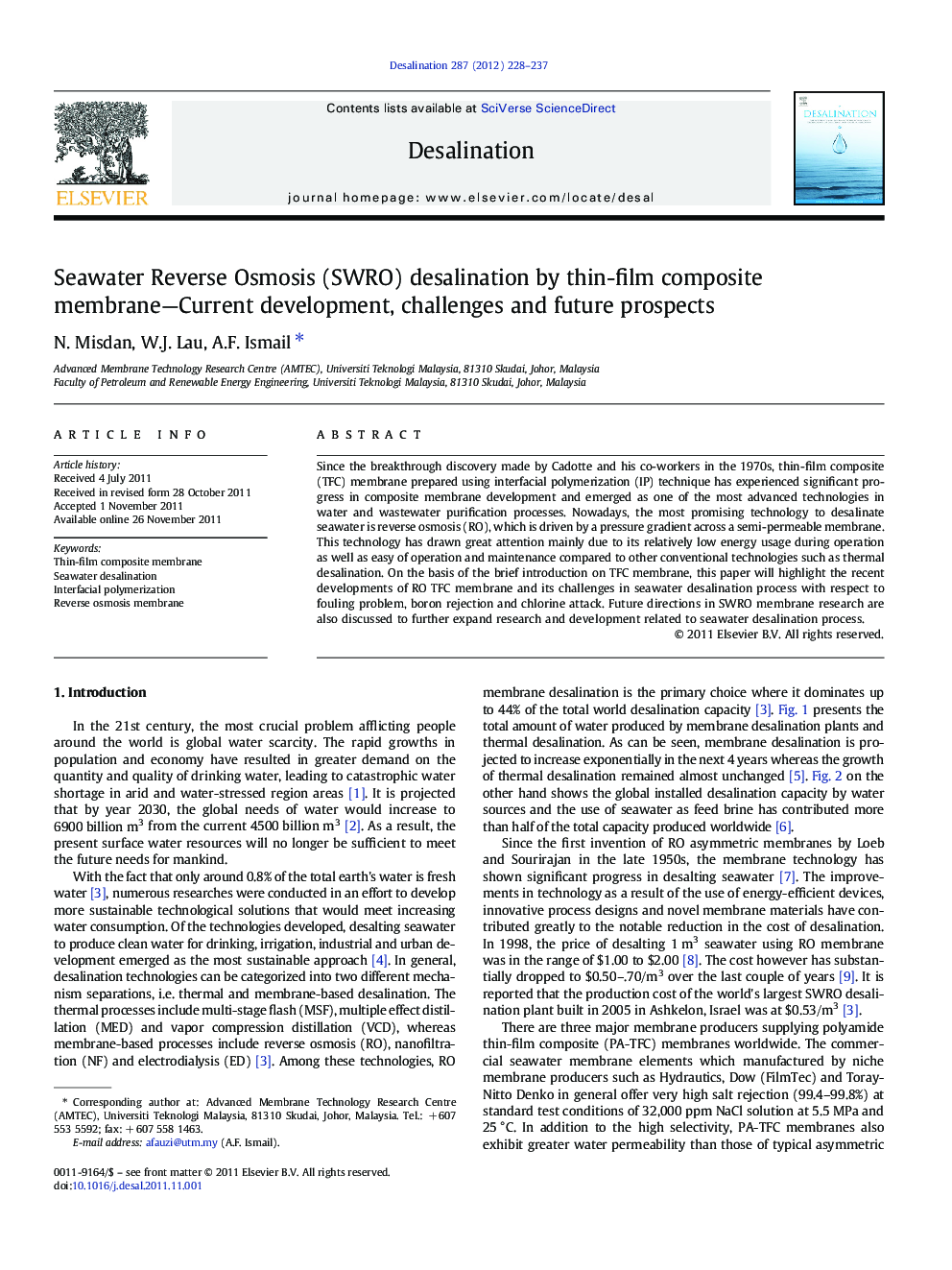| Article ID | Journal | Published Year | Pages | File Type |
|---|---|---|---|---|
| 624467 | Desalination | 2012 | 10 Pages |
Since the breakthrough discovery made by Cadotte and his co-workers in the 1970s, thin-film composite (TFC) membrane prepared using interfacial polymerization (IP) technique has experienced significant progress in composite membrane development and emerged as one of the most advanced technologies in water and wastewater purification processes. Nowadays, the most promising technology to desalinate seawater is reverse osmosis (RO), which is driven by a pressure gradient across a semi-permeable membrane. This technology has drawn great attention mainly due to its relatively low energy usage during operation as well as easy of operation and maintenance compared to other conventional technologies such as thermal desalination. On the basis of the brief introduction on TFC membrane, this paper will highlight the recent developments of RO TFC membrane and its challenges in seawater desalination process with respect to fouling problem, boron rejection and chlorine attack. Future directions in SWRO membrane research are also discussed to further expand research and development related to seawater desalination process.
► Challenges faced by RO TFC membranes in seawater desalination process. ► Recent progress in the development of RO TFC membranes. ► Future directions in RO TFC membrane development for SWRO application.
